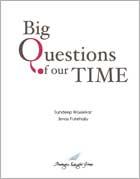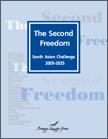Malaysian Recipe for Good Governance
 |
October 14, 2013
By Ilmas Futehally
|
On a recent visit to Kuala Lumpur, Ilmas Futehally met with cabinet ministers and senior government officials in the Performance Management and Delivery Unit (Pemandu) in the Malaysian Prime Minister�€™s Office. She examines the ingredients and process that brought success to this initiative aimed at creating big fast results in Malaysian governance.
Time taken: 4 years
Introduction:
In September 2009, newly elected Malaysian Prime Minister Dato' Sri Najib Tun Razak established the Performance Management and Delivery Unit (Pemandu) inside the Prime Minister�€™s Office to oversee implementation of projects, assess progress and support the delivery of Government Transformation Programme (GTP). This programme includes specific initiatives to help Malaysia achieve its Vision 2020 and become a high income nation, rooted in the motto of �€œPeople First, Performance Now�€.
On a recent visit to Kuala Lumpur, as part of a team from the Sakal Media Group, I had the good fortune to meet some key people in Pemandu, as well as other government institutions that are part of the transformation process. Below is a recipe for good governance, derived from the Pemandu experience in Malaysia over the last four years.
Ingredients:
- Committed political leadership
- Clarity of vision
- Public participation
- Involvement of all stakeholders
- Specific and ambitious goals
- Specific delivery targets
- Effective communication
- Feedback from multiple parties
- Transparency
- Efficiency
- A central clearing house for ideas.
Preparation:
As the first step, the Malaysian Prime Minister�€™s Office identified seven NKRAs (National Key Result Areas) that were derived from extensive consultations with key stakeholders at all levels- from common people and corporate magnates to Cabinet Ministers. The second step was to host Labs lasting for a period of 6 to 8 weeks for each of the seven key areas. These labs determined goals for each sector to be achieved by 2020, with sub goals to be achieved on the way. They identified specific challenges in achieving these goals and ways to overcome them, along with new ideas to help sustain the process. The Labs brought together about 250 people in seven sectors or roughly 30-40 experts in each sector. The discussions were facilitated by the team at Pemandu to come out with specific and deliverable results within the specific NKRA. They also helped to bring about a consensus among competing interests and helped to prioritize projects. These were followed by regular �€œOpen Days�€ where common people could come in and understand, analyse, criticise and make suggestions on identified priorities and goals ways to achieve them.
In the meanwhile, the team at Pemandu prepared road maps for implementation and monitoring of the projects. Each ministry has a nodal point for National Key Results in the ministry who must periodically report the progress in hard numbers. The results are then published on the websites and through the media. This enables people to know if public projects, using public funds, are on track as per the declared objectives. The media is involved at all stages of the process and helps in increasing public outreach and involvement of the people of Malaysia.
The Programme Management Team (PMT) at Pemandu is the central coordinating unit that helps to monitor performance of sector teams. It also helps in problem solving. At times the team is also tasked directly by the Prime Minister to undertake special developmental work. As a key person at the PMT told us, �€œPeople may deliver when you expect, but people will deliver when you inspect�€. But just monitoring is not enough. There is also a self assessment system undertaken by all ministries that are involved in implementation of projects, added to an exhaustive annual audit system.
Results:
It is easier to understand the process by looking at a few specific examples. In the energy sector, Labs identified the need for increasing the spread of renewable energy. With this objective in mind, a fund of 1% of the electricity tariff is now used to subsidise solar power for individuals who want to go for this option. The Labs also helped to predict new possibilities for the future, such as the use of bio-fuels.
One interesting initiative undertaken in the field of energy was a study by a Malaysian institute which showed that fuel subsidies help the richest the most. Addressing this issue, the Pemandu team decided to gradually increase fuel prices to bring them to the open market levels. Communication strategies were devised to help explaining this to the public at large through open days and the media.
Urban transport was a big problem in Kuala Lumpur a few years ago. (Even today, the traffic is quite bad). One NKRA focussed on improving urban public transportation with the aim of increasing the rider-ship. Five years ago, the modal share of public transport was 16%. Today it is 20% with 20-30,000 new commuters being added to the city every year. In the next 2-3 years the target is to reach 30%. 13 different agencies that managed public transport earlier were merged into one nodal agency. A key programme that emerged from this was the Go-KL project that initiated a free commuter bus service that goes around two routes and ensures last mile connectivity to people who want to use the local train system. The train system itself has been revitalised by bringing in new trains, decreasing the load factor from 140% (very crowded) to 65% (very comfortable). Also 5 railway networks have been joined by creating 3 physically integrated stations for seamless ticketing. This reduces travel time significantly. A key objective of the Greater KL project is to make Kuala Lumpur into one of the 20 most live-able cities in the world. Today it ranks 77.
We also learnt about transformation that has occurred in the NKRAs of assuring quality education, fighting corruption, raising living standards for low income households, improving rural development and addressing the cost of living.
The NKRA that I was most impressed with was the one aimed at reducing crime. In 2009, crime in Malaysia was at its peak. The aim was to reduce the crime index by 5% per year. The overall objective was to make people feel safe and provide security. In the last 4 years the police have already achieved the target of reducing street crime by 20% and overall crime by 5% per year. In fact in Penag they have reduced crime by 26% in the last four years. They did this by introducing a number of innovative ideas, including recruiting volunteers and training them in patrolling and information gathering. They shifted trained policemen from offices into the field and aimed at whitening of �€œblack areas�€ where crime was predominant by involving all agencies, from school authorities and housing societies to the electricity board. The NKRA for reducing crime is now in its second phase with the aim to address the root causes of crime as well as support victims of crime.
The Malaysian recipe for good governance is one that ensures �€œbig fast results�€ in a short period of time. It shows that when there is political will and leadership that is responsive to the needs of the people, real transformation in the lives of people occurs.
Recently an interaction of representatives from 14 countries convened to see how the Malaysian model could be applied in their own countries. The Sakal Media Group in India is currently in the process of evaluating how the Pemandu experience can be replicated, with suitable modifications, in the State of Maharashtra. It would be interesting to see how many other countries are willing to try this recipe for good governance for themselves.
Related Publications
-
.jpg&maxw=50)
Big Questions of Our time: The World Speaks, 2016
Download:Big Questions of Our time: The World Speaks _Full Report
-

-

Second Freedom South Asian Challenge 2005-2025, 2005
read more
Download:Second Freedom South Asian Challenge 2005-2025 Full Report
Related latest News
Related Conferences Reports
-

Global Challenges Conference, October 2016
Download:Global Challenges Conference Report
-

Conference on Responsibility to the Future: Business, Peace and Sustainability, June, 2008
Download:Global Security and Economy: Emerging Issues


